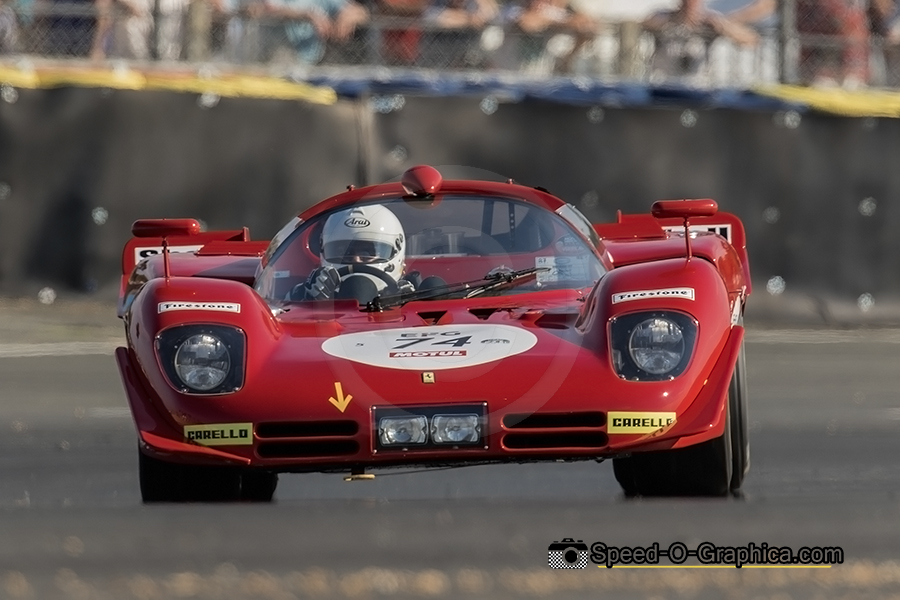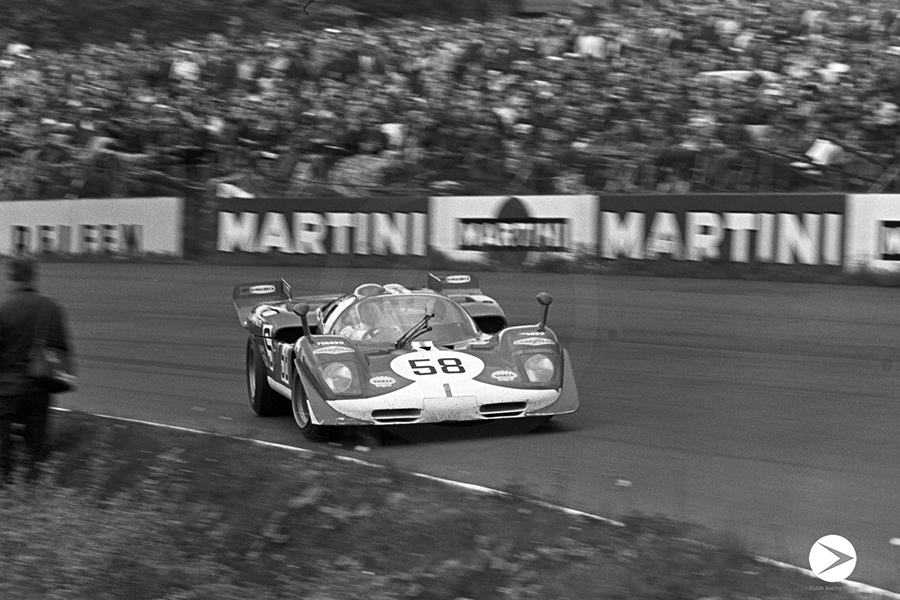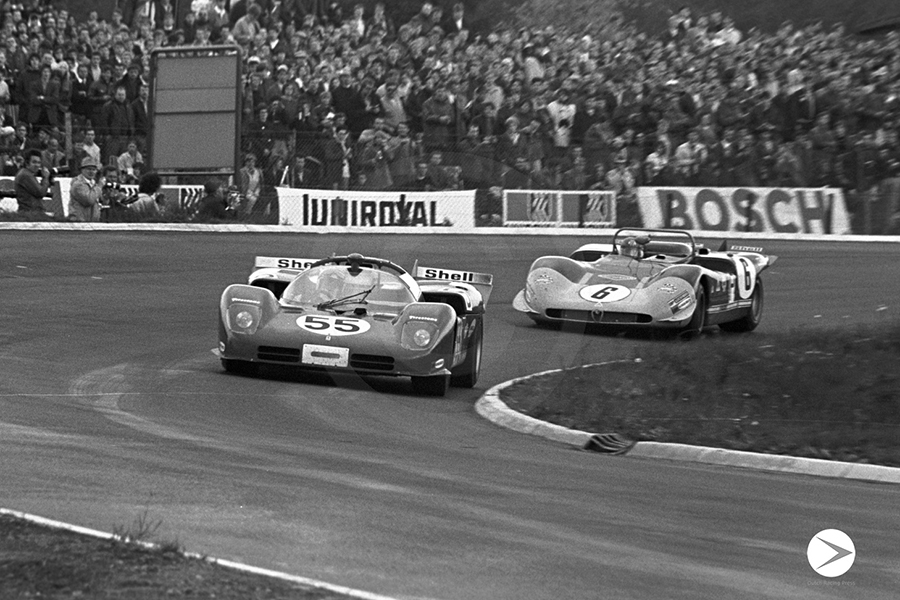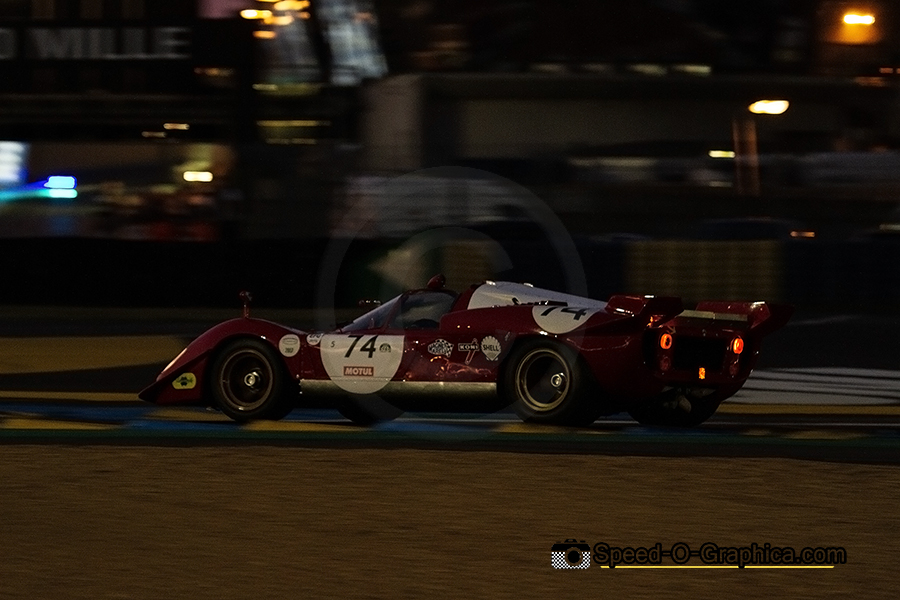Ferrari 512: The Stunning Sports Car Racer from the Seventies, Part 1

Through legendary race machinery across the decades, Ferrari has made an enviable mark on the world of motorsport. Yet, the brand with the prancing horse has also released models that languished in the shadow of their opponents. One of those cars was the Ferrari 512M/S, which was overshadowed by the legendary Porsche 917 in the world of endurance racing.
In this first part of a broader story, we focus on the Ferrari 512 S, a sports car that replaced the 330 P4 in 1970, designed by a team headed by Mauro Forghieri. At the time, the FIA had allowed sports cars to use 5 litre engines, up from the prior 3 litre capacity. To get a car homologated initially 50 examples had to be built, but under the new regulations only 25 cars needed to be produced.
Analogous to the Ferrari 312P sports prototype and equipped with a three-litre V12 engine, which was built in just a few copies in 1969, the 512S refers to a car with a 5 litre V12 (500 hp) engine built according to the new rules. Ferrari developed a 4.993,53 cm³ that initially delivered 550 bhp at 8500 revs per minute.
Up until 1969, sports cars used Formula 1 engines which had been limited to 3 litres since the end of 1967 and it became clear that these engines were not the best choice for endurance racing. Porsche consistently exploited a loophole in the regulations resulting in the 917. Porsche hadn’t captured overall wins at Le Mans, just victories within the categories with their 904, 907 and 908 sport scars. The 917 had to break this impasse.

Scuderia Filipinetti Ferrari 512S – Mike Parkes – Herbert Müller – Nürburgring 1000 km 1970 © Winau Berkhof/Dutch Racing Press
In Italy it was Enzo Ferrari who had neglected the market for customer racing vehicles for years. For the 330P4 from 1967 he used a 4 litre V12 engine. To invest part of the proceeds in building the necessary 25 cars for a homologated 5 litre sports car, he sold Ferrari shares to FIAT. At the end of 1969 he introduced the 512S, a full racing season later than Porsche’s 917 arrived.
Taking into account the existing rules for sports cars, Ferrari used a 3 litre V12 to power the 312P in 1969, in fact an evolution of the engine used in the 330 P4 that was similar to the 312 F1 engine. Instead of three valves per cylinder, the evolution had four valves per cylinder. Ferrari continued to race the 312 P until Porsche entered the 917 at Le Mans.
Enzo Ferrari saw the potential of the Porsche 917 at Le Mans despite suffering from growing pains. The result was a GT racer powered by an engine that closely followed with the already 12 cylinder existing Formula 1 engine. Ferrari placed the 5 litre engine mid-ship and was capable of generating 560 hp, later increased to 600 hp. The 5 litre Ferrari engine had quad cams and four valves per cylinder and although it was more powerful than the German opponent, the 512S was heavier than the 917.

SpA Ferrari SEFAC Ferrari 512S – John Surtees – Nino Vaccarella – Nürburgring 1000 km 1970 © Winau Berkof/Dutch Racing Press
Seventeen cars were completed and parts for the remaining 8 chassis were displayed. The Ferrari 512S was homologated in January shortly before the race in Daytona. Several customer teams, such as North American Racing, Filipinetti, Francorchamps, Montjuich and Gelo bought the car, although some cars remained unsold. A single chassis was made available to Pininfarina, who used it to create the Modulo study. Chassis were numbered from 1002 to 1050.
In the 1970 World Championship, the 512S ran with different body variants. In addition to the Berlinetta and Targa versions, there were semi-open spyders and a variant with a long tail (Coda Lunga) for the 24 Hours of Le Mans.
Due to a lack of development time and race preparation, only one victory was achieved – in the 12 Hours of Sebring in 1970 over the more reliable Porsche 917. Mario Andretti secured the pole position for this race and although a pit stop sent him back to fourth place, he captured the first victory for a Ferrari 512. This remained the only racing success of a Ferrari 512 in the manufacturers’ world championship; Outside the championship there was another victory in Kyalami.
Andretti drove a car in its original configuration as the other four entries for that particular race were converted spyders with a removed top. It should be noted that part of Ferrari’s success was due to the technical problems at Porsche. As mentioned both Ferrari and Porsche created special long tail versions. The Coda Lunga version of the 512S was created to reduce drag and top speed over 340 kmh just as Porsche’s 917 LH.
Although Ferrari had an aerodynamic advantage, the 512S had a 100 kg higher weight over the Porsche 917. At Le Mans, Ferraris dropped out due to technical problems or accidents. Hans Hermann and Richard Attwood crossed the chequered flag first in their 917K.
At the end of 1970, Ferrari upgraded the 512S to 512M (Modificato) and entered the car for the race at the Oesterreichring. At that particular time the 512S was mainly available as a wedge-shaped body. The upgraded 512 was by far faster than the Porsche 917 during that race in Austria, although they had to retire due to problems with the alternator.
Ferrari’s patience was further tested but during the race in Kyalami this was more than compensated for. Jacky Ickx and Ignazio Gunti won dominantly with a lead of two laps over the Porsche 917 of Jo Siffert and Kurt Ahrens.
In the second part of our retrospective of the Ferrari 512 we will take a look at the 512M.

